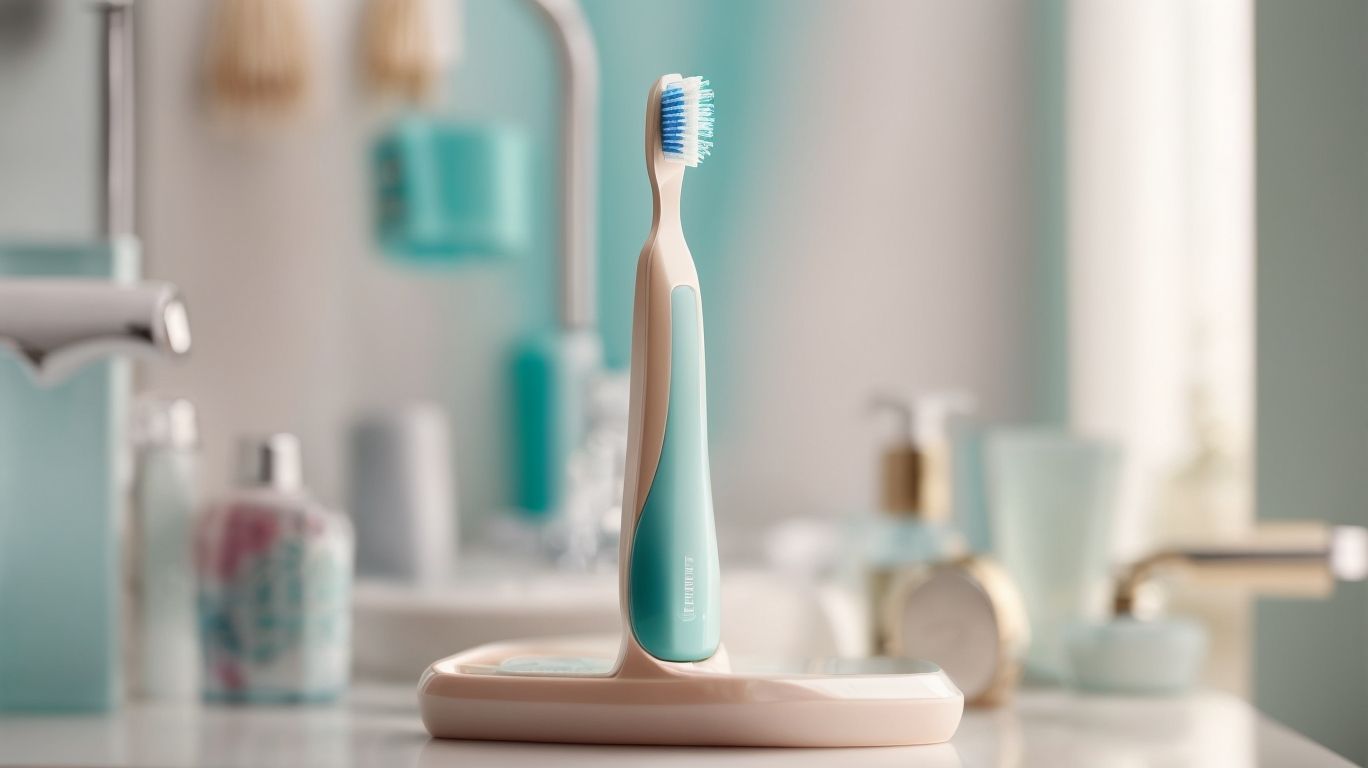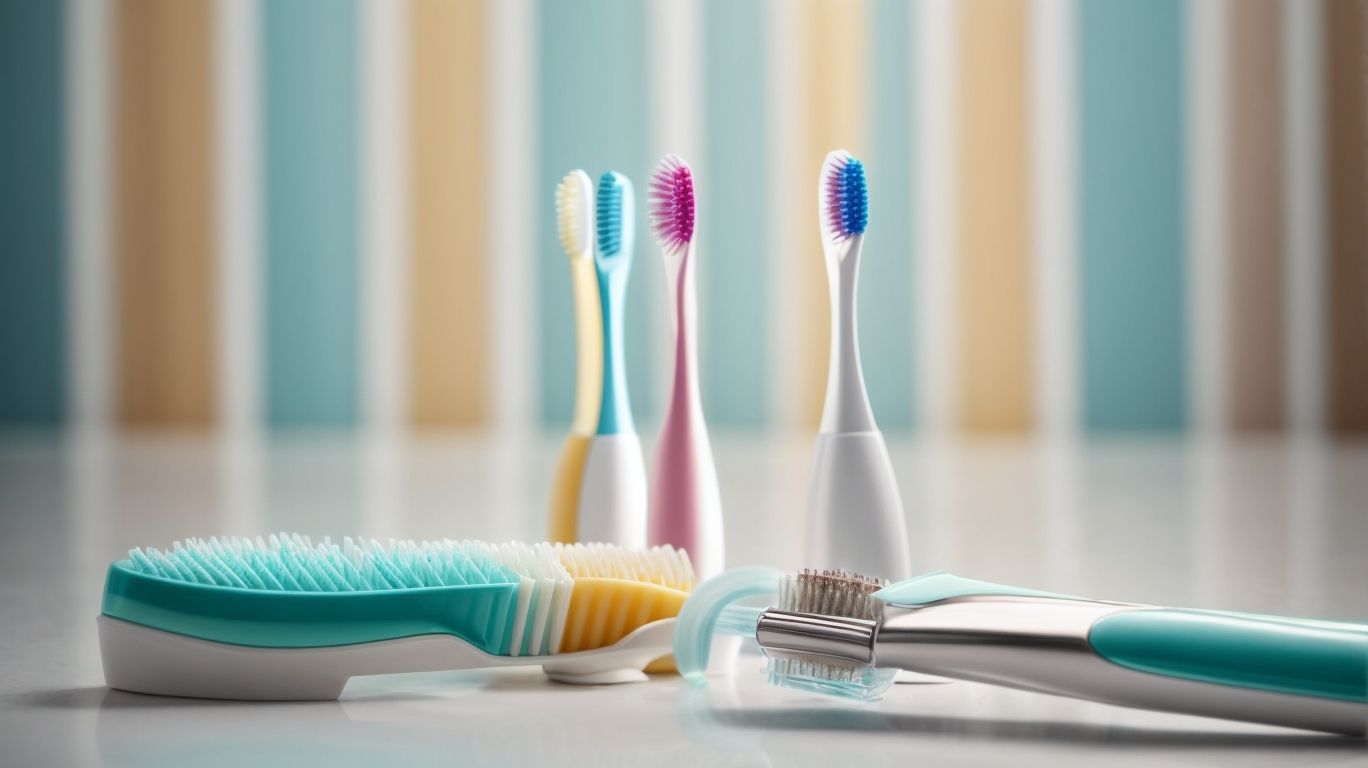
Maintaining good oral hygiene is essential for a healthy smile, and one important aspect of this is regularly changing your toothbrush. But how often should you change your toothbrush? Let’s explore the reasons behind the importance of changing your toothbrush and the recommended frequency for doing so.
Keeping your toothbrush clean and in good condition is crucial for effective oral care. Over time, toothbrush bristles can become frayed, worn, and harbor bacteria, which can compromise its effectiveness at removing plaque and bacteria from your teeth and gums. This can lead to oral health issues such as tooth decay, gum disease, and bad breath.
If you continue using an old, worn-out toothbrush, it may not effectively clean your teeth and gums, leaving plaque and bacteria behind. an old toothbrush may also contain accumulated bacteria and fungi that can pose potential health risks.
The American Dental Association (ADA) recommends replacing your toothbrush every three to four months or sooner if the bristles become frayed or worn. However, there are certain factors to consider that may require more frequent toothbrush changes. Factors include if you’ve been sick or have had an oral infection, as these can introduce additional bacteria to your toothbrush.
Knowing when it’s time to change your toothbrush is also vital. There are several signs to look out for, including worn bristles, frayed or bent bristles, discoloration or stains on the bristles, or if you’ve recently been ill or had an oral infection.
Proper toothbrush care is important to ensure its effectiveness and longevity. Rinse your toothbrush thoroughly after each use, store it in an upright position to allow it to air dry, and avoid sharing toothbrushes with others.
By understanding the importance of changing your toothbrush, knowing the recommended frequency, recognizing signs of when to change it, and practicing proper toothbrush care, you can maintain optimal oral health and keep your smile bright and healthy.
Key takeaways:
- Changing your toothbrush regularly is important: Regularly changing your toothbrush helps maintain good oral hygiene and prevents the build-up of bacteria and germs on the bristles.
- Factors to consider when changing your toothbrush: Factors such as the condition of the bristles, how often you use it, and if you have been sick or infected should be considered when determining when to change your toothbrush.
- Signs that indicate it’s time to change your toothbrush: Worn bristles, frayed or bent bristles, discoloration or stains, and illness or infection are all signs that suggest it’s time to replace your toothbrush for optimal oral health.
Why is it Important to Change Your Toothbrush?

Photo Credits: Feelsgoodtosmile.Com by William Clark
Why is it Important to Change Your Toothbrush?
Regularly changing your toothbrush is crucial for maintaining good oral hygiene. There are several reasons why it is important to change your toothbrush:
- Bacteria buildup: Over time, the bristles of your toothbrush can accumulate bacteria, which can lead to oral health issues.
- Effective cleaning: As the bristles become worn-out, they lose their ability to clean your teeth and gums effectively, thus diminishing the benefits of brushing.
- Preventing gum disease: By replacing your toothbrush every 3-4 months, you significantly reduce the risk of gum disease and other dental problems.
- Fresh breath: Changing your toothbrush regularly helps eliminate the bacteria that can cause bad breath.
It is important to remember that changing your toothbrush ensures a healthier mouth and better overall oral care. So, make sure you replace your toothbrush regularly!
What Happens if You Don’t Change Your Toothbrush?
If you don’t change your toothbrush regularly, it can harbor harmful bacteria and become less effective at cleaning your teeth. Over time, the bristles of your toothbrush can wear down, fray, and collect debris. This can lead to ineffective cleaning and poor oral hygiene. Using an old toothbrush can contribute to the growth of bacteria and increase the risk of infections and illness. What happens if you don’t change your toothbrush? It is recommended to replace your toothbrush every three to four months, or sooner if the bristles are visibly worn or you have been sick. By regularly changing your toothbrush, you can maintain good oral health and prevent potential health problems.
Fact: Did you know that the average person spends approximately 38.5 days brushing their teeth over their lifetime?
How Often Should You Change Your Toothbrush?

Photo Credits: Feelsgoodtosmile.Com by Carl Smith
Did you know that how often you change your toothbrush can have a significant impact on your oral health? In this section, we’ll explore the importance of proper toothbrush maintenance and delve into the factors that you should consider when deciding how often to change your toothbrush. From the effectiveness of the bristles to the presence of bacteria, we’ll uncover key insights that will help you make informed decisions about your oral hygiene routine. So, let’s dive in and discover the secrets to a healthy smile!
Factors to Consider when Changing Your Toothbrush
When changing your toothbrush, there are several factors to consider. These factors include the condition of the bristles, the frequency of use, oral health conditions, and natural wear and tear.
Firstly, it is important to examine the bristle condition. Look for worn or frayed bristles, as they become less effective at cleaning your teeth and gums.
Next, take into account the frequency of use. If you brush your teeth regularly, it is recommended to replace your toothbrush every three to four months.
Consider your oral health conditions as well. If you have a weakened immune system or an oral infection, it is advisable to replace your toothbrush more frequently.
Lastl y, keep in mind the natural wear and tear on your toothbrush. Over time, toothbrushes accumulate bacteria and become less effective. Therefore, it is crucial to replace them regularly.
By considering these factors, you can maintain good oral hygiene and ensure the effectiveness of your toothbrush.
Signs that Indicate it’s Time to Change Your Toothbrush

Photo Credits: Feelsgoodtosmile.Com by Jeffrey Baker
Is your toothbrush due for a swap? Look out for these telltale signs that it’s time to bid farewell to your trusted dental tool. From worn bristles to frayed or bent strands, we’ll uncover the visual cues that indicate the need for a replacement. Discoloration or stains? It could be a sign that your toothbrush has become a breeding ground for bacteria. And when illness or infection strike, your toothbrush may harbor lingering germs. Stay tuned as we dive into the signs that should prompt you to change your toothbrush, ensuring a healthy and effective oral care routine.
1. Worn Bristles
When the bristles on your toothbrush become worn, it can reduce its effectiveness in keeping your teeth clean and healthy. It is important to replace your toothbrush for the following reasons:
- 1. Worn bristles are unable to effectively remove plaque and food particles, which increases the risk of cavities and gum disease.
- 2. Frayed or bent bristles can irritate your gums and cause discomfort during brushing.
- 3. If there is discoloration or stains on the bristles, it may indicate a buildup of bacteria, making your toothbrush unhygienic.
- 4. After being sick or having an infection, it is crucial to replace your toothbrush to prevent recontamination.
To maintain optimal oral hygiene, it is recommended to replace your toothbrush every three to four months or sooner if the bristles become worn before then.
2. Frayed or Bent Bristles
Frayed or bent bristles on your toothbrush can make it ineffective at thoroughly cleaning your teeth. There are several reasons why you should replace your toothbrush when you notice frayed or bent bristles:
- Reduced cleaning power: Frayed or bent bristles may not be able to reach all the surfaces of your teeth, leaving behind plaque and food particles.
- Poor gum health: Ineffective brushing caused by damaged bristles can lead to gum disease and inflammation.
- Increased bacterial growth: Worn bristles can harbor bacteria, increasing the risk of oral infections.
- Uncomfortable brushing experience: Frayed bristles can cause discomfort on your gums or teeth, making brushing less pleasant.
To maintain good oral hygiene, regularly check the condition of your toothbrush and replace it when you notice frayed or bent bristles.
3. Discoloration or Stains
Discoloration or stains on your toothbrush can indicate that it’s time to change it. Here are some reasons why:
- One reason for toothbrush discoloration or stains is bacterial build-up. Over time, bacteria can accumulate on the bristles, causing them to become discolored.
- Another cause of discoloration or stains on your toothbrush is the presence of food particles. Residue from food and drinks can get trapped in the bristles, leading to unsightly stains.
- If your toothbrush is not properly dried between uses, it can develop mold or mildew. This can result in discoloration of the bristles, making it necessary to replace the toothbrush.
To prevent these issues, it is recommended to replace your toothbrush every three to four months or sooner if the bristles become frayed or worn out. Regularly inspecting your toothbrush for discoloration or stains is important for maintaining oral hygiene.
4. Illness or Infection
Illness or infection is a crucial factor to take into consideration when deciding on the appropriate time to replace your toothbrush. The bristles of your toothbrush can accumulate bacteria and germs, potentially leading to the transmission of infections or illnesses. If you have recently been unwell or experienced an infection, it is highly recommended to discard your current toothbrush in order to prevent any chance of reinfection. It is important to be vigilant for indicators such as discolored bristles or a persistent unpleasant odor emanating from the brush, as these signs may suggest the presence of harmful bacteria. By consistently changing your toothbrush, you can effectively uphold good oral hygiene and significantly mitigate the risk of falling ill or contracting an infection.
Tips for Proper Toothbrush Care

Photo Credits: Feelsgoodtosmile.Com by Joshua Lopez
- Replace your toothbrush every three to four months, or sooner if bristles are frayed or worn.
- Rinse your toothbrush thoroughly after each use to remove any remaining toothpaste and debris.
- Store your toothbrush in an upright position to allow it to air dry and minimize bacterial growth.
- Avoid sharing your toothbrush with others, as this can lead to the spread of germs and bacteria.
- Consider using a toothbrush sanitizer or soaking your toothbrush in mouthwash to further reduce bacteria.
- Keep your toothbrush away from the toilet and use a toothbrush cover when traveling to protect it from exposure to germs.
Some Facts About How Often You Should Change Your Toothbrush:
- ✅ Dentists recommend replacing your toothbrush every three to four months. (Source: Our Team)
- ✅ Electric toothbrush heads may need to be replaced even sooner, typically after one to two months. (Source: Our Team)
- ✅ If you’ve been sick, it’s important to replace your toothbrush right away once you’ve recovered, regardless of the time frame. (Source: Our Team)
- ✅ Signs that you need to replace your toothbrush include bristles that start to bend and curve up, as well as discoloration, bristles falling out, fraying, or losing stiffness. (Source: Our Team)
- ✅ Some toothbrushes have built-in indicators that change over time to signal that they need to be replaced. (Source: Our Team)
Frequently Asked Questions
How often should you change your manual toothbrush?
Dentists recommend replacing your manual toothbrush every three to four months to maintain optimal oral hygiene. Avoid stretching it past six months as worn out toothbrushes don’t remove plaque well and can accumulate millions of germs. Signs that you need to replace your manual toothbrush include bristles that start to bend and curve up, discoloration, bristles falling out, fraying, or losing stiffness.
How often should you change your electric toothbrush?
Electric toothbrush heads may need to be replaced even sooner, typically after one to two months. This is because the spinning motions of electric toothbrushes can cause wear and tear on the bristles. Regularly swapping out the toothbrush head helps maintain its effectiveness in removing plaque build-up, food particles, and bacteria.
Can using the same toothbrush lead to bacterial infections?
Yes, using the same toothbrush for an extended period can lead to bacterial and fungal infections. Bacteria can accumulate on the bristles over time, and if not changed regularly, the bristles become ineffective at removing food particles and bacteria from the teeth and gums, increasing the risk of tooth decay, cavities, bad breath, and gum diseases.
Are soft bristles better for dental care hygiene?
Yes, soft bristles are recommended for dental care hygiene. Soft bristles are gentle on the gums and tooth enamel while effectively removing plaque. Hard bristles can cause gum irritation and enamel erosion. Regularly changing toothbrushes helps ensure that the bristles remain soft and effective for oral hygiene.
How does neglecting dental care impact overall health?
Neglecting dental care can have serious health consequences, such as heart disease and diabetes. The oral microbiome is connected to the gut microbiome, and poor oral health can lead to imbalances in the gut, affecting overall health. Maintaining good oral hygiene, including regularly changing toothbrushes, is crucial for preventive health.
What are some recommended oral hygiene practices apart from changing toothbrushes regularly?
In addition to regularly changing toothbrushes, it is important to floss your teeth before brushing them and to let your toothbrush air-dry before storing it in a closed container to prevent bacteria build-up. Flossing your teeth at least once a day, preferably after every meal, is recommended. Dentists also advise getting your teeth cleaned every three months if possible to maintain optimal oral health.

A highly skilled and accomplished Doctor of Dentistry, with over 10 years of experience, holding a Doctor of Dental Medicine (DMD) degree from Howard University College of Dentistry, Washington.